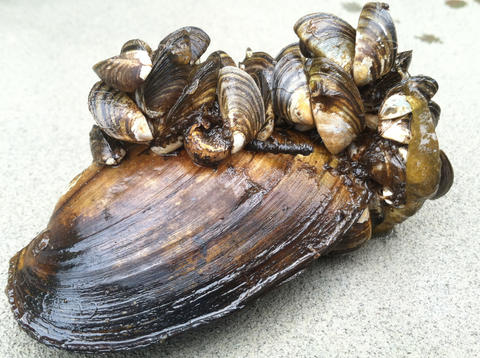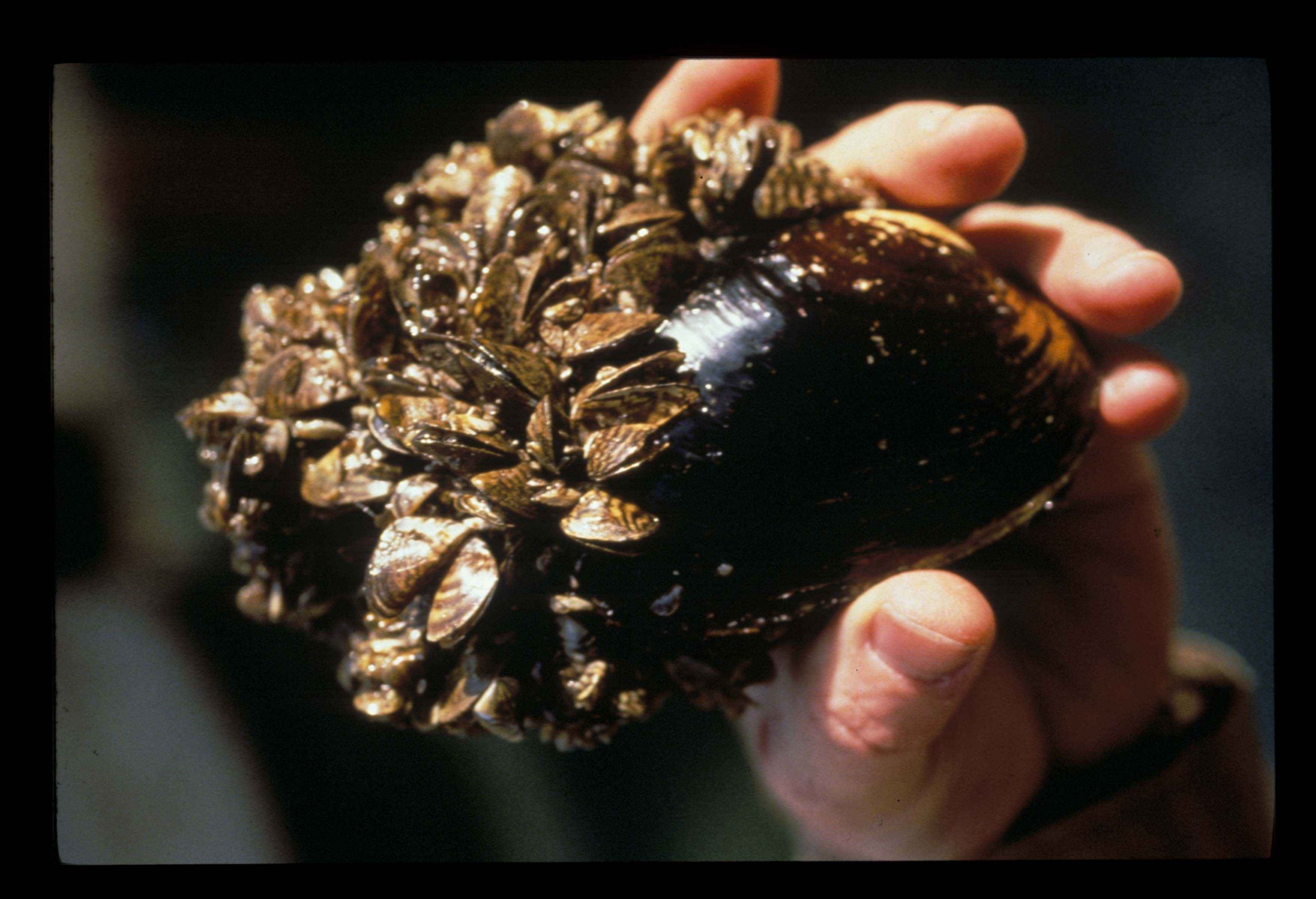The Minnesota Department of Natural Resources confirmed the presence of zebra mussels in Lake Owasso in October of 2021. (See the DNR press release). 13 zebra mussel shell fragments were found during a SCUBA survey of the lake and DNR staff found a live adult zebra mussel during a subsequent dive search. The survey was in coordination with a Ramsey County early detection program that includes eDNA analysis and water sampling for zebra mussel larvae. The larvae test has come back negative. The results of the more rigorous test (eDNA) are still pending.
Zebra mussels can compete with native species for food and habitat, cut the feet of swimmers, reduce the performance of boat motors and cause expensive damage to water intake pipes. The eDNA test might indicate how widespread the problem is for Lake Owasso. It is possible that a lake can get a few zebra mussels and for whatever reason, they just don’t propagate. Bald Eagle lake is an example of this.
What can lake residents and boaters do to further prevent spread?
Here is a list of action items lake residents can do to help prevent the proliferation of Zebra Mussels:
- Teach yourself how to identify a zebra mussel. Start with the MN DNR Aquatic Invasive Species Guide and UMN MAIS Resource Center.
- Inspect posts on your dock and boat lift. Even in December you would still see remnants. If you think you have found a zebra mussel, note the exact location, take a photo or keep the specimen, and forward a photo to Keegan.lund@state.mn.us (DNR invasive species specialist at the DNR). See DNR Requst for help letter.
- Provide written permission to Justin Townsend, AIS Coordinator Ramsey Conservation District, to cross your property for him to inspect. Email: Justin.townsend@co.Ramsey.mn.us.


Whether or not a lake has any invasive species, Minnesota law requires boaters and anglers to:
- Clean watercraft and trailers of aquatic plants and prohibited invasive species,
- Drain all water by removing drain plugs and keeping them out during transport, and
- Dispose of unwanted bait in the trash.
Some invasive species are small and difficult to see at the access. To remove or kill them, take one or more of the following precautions before moving to another waterbody:
- Spray with high-pressure water.
- Rinse with very hot water (120 degrees for at least two minutes or 140 degrees for at least 10 seconds).
- Dry for at least five days.
Anyone who suspects a new infestation of an aquatic invasive plant or animal, on any body of water, should note the exact location, take a photo or keep the specimen, and contact a Minnesota DNR aquatic invasive species specialist

